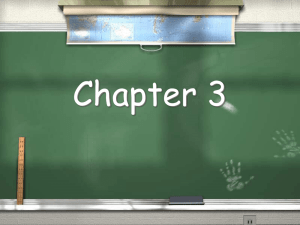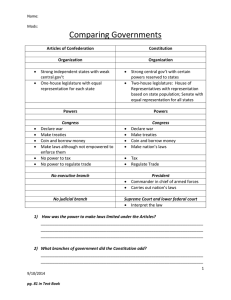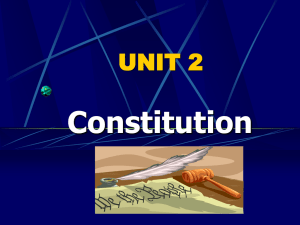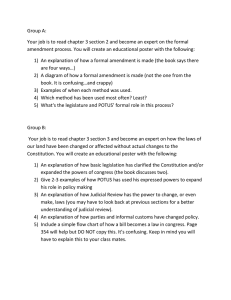Amendments - Cloudfront.net
advertisement
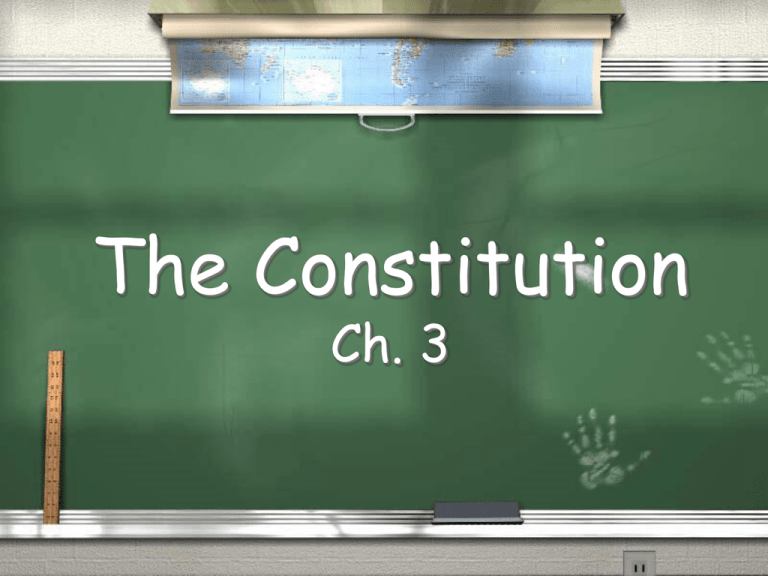
The Constitution Ch. 3 Structure of the Constitution Preamble - Introduction and statement of purpose; Seven Articles - each articles covers a different topic – Sections Clauses Amendments - changes/additions – Bill of Rights - First ten amendments – 27 total amendments The Legislative Branch • Article I - Establishes a bicameral legislature called Congress • House of Representatives • • The Voice of the People Based on population • 435 members total • Speaker of the House • Elected by the House • Senate • • • The Voice of the States Two senators per state President Pro Tem The Legislative Branch • The Enumerated Powers of Congress (Art. I, §8) - Powers specifically listed in the Constitution: • • • • Regulate Interstate Commerce Levy Taxes Borrow Money Declare War The Legislative Branch • Implied Powers - Powers not specifically listed but implied by the text and structure of the constitution. • Necessary & Proper Clause • Congress has the right to make all laws which are necessary and proper for carrying out its other enumerated powers • McCulloch v. Maryland - Congress has the power to create a national bank The Executive Branch • Article II - Establishes the Executive branch lead by a president. • Enumerated powers: • Commander in Chief • Veto legislation passed by Congress • Appointments & Commissions • Heads of Departments, Ambassadors, Judges, Military Officers • Power to Make Treaties • Issue Pardons • State of the Union Executive Branch • Implied Powers • “The executive power shall be vested in a President of the United States…” • The President must ensure that laws are “faithfully executed” • Foreign Affairs - The Supreme Court has declared that the President is the “sole organ of foreign affairs.”(Ex Parte McCardle) Judicial Branch • Article III - Establishes the federal judiciary; • The Supreme Court • Does not specify the number of judges; • Currently, 9 judges sit on the SC • Congress can establish other inferior (lower) courts; • All federal judges serve during good behavior. Judicial Branch • Jurisdiction • The power of a court to hear and decide a case • Federal Court Jurisdiction: • Federal Question - cases involving the Constitution, federal laws or treaties; • Diversity - Cases between citizens of different states or between U.S. citizens and citizens of other countries • Ambassadors or Public Ministers • Admiralty or Maritime • U.S. is a party • State v. State **ALL OTHER CASES GO TO STATE COURT** Judicial Branch Jurisdiction of the Supreme Court • Original – The case starts in the SC • Only two types of cases: • Ambassadors or Public Ministers • A State is a party • Makes up less than 1% of the SC’s cases • Appellate –The case starts in a lower court and only reaches the SC on appeal (review). • • Most cases come to the SC on appeal; The SC only hears about 3% of cases. Amending the Constitution • Article V - Formal procedures for Amending the Constitution • Proposing an Amendment • • 2/3rds of Congress vote on the amendment* State Convention • Ratifying an Amendment • • 3/4 State Legislatures ratify the amendment* 3/4 State Ratifying Conventions

